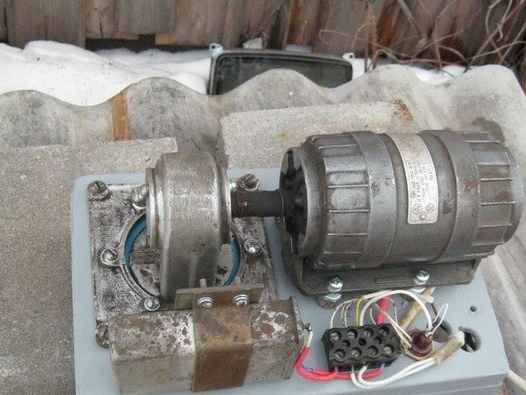
The KV-10 air compressor of small power and capacity came to me in an idle state, from being freed from junk the garage. The compressor was manufactured in 1981, the era when metal was not spared, but any civilian equipment required refinement and tuning.
One of the copper air tubes (to the pressure switch) was twisted and broken in the compressor, one of the two valves on the “master cylinder” was broken, and all rubber parts — gaskets, membranes, valve rubber — were hardened to death. In addition, some parts were filled with almost vegetable oil, which also polymerized from old age.
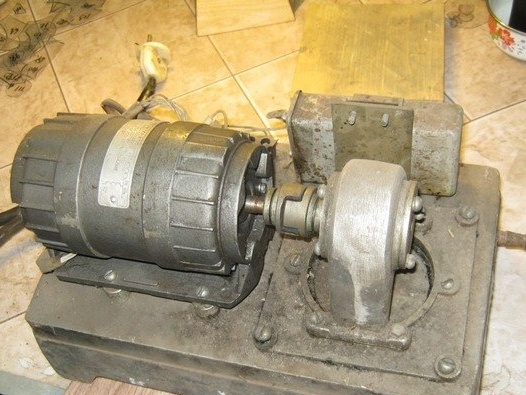
A short test run showed that the motor was alive, therefore, a number of work was undertaken to restore the compressor.
What was used in the work.
Tool.
A set of small bench tools, a screwdriver (drilling), a 40 W soldering iron with accessories, a set of tools for electrical installation, a building hair dryer, a jewelry jigsaw came in handy. For painting - brushes, containers for paintwork materials.
Materials
Power cord with plug, fasteners, thermotube, reliable toggle switch, neon light. Silicone mat, tape FUM, LKM (including a lot of solvent - gasoline, acetone, for washing dirt), rags.
What was done.
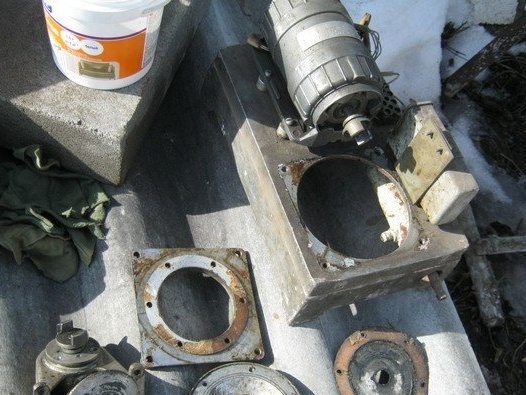
The compressor is not easily disassembled. Sour and rusted fasteners overcame with penetrating grease a good screwdriver and a small plumb bend. Adhesive and hardened oil and gum had to be literally scraped off with a sharp knife, and if possible, washed off the residues with solvents.
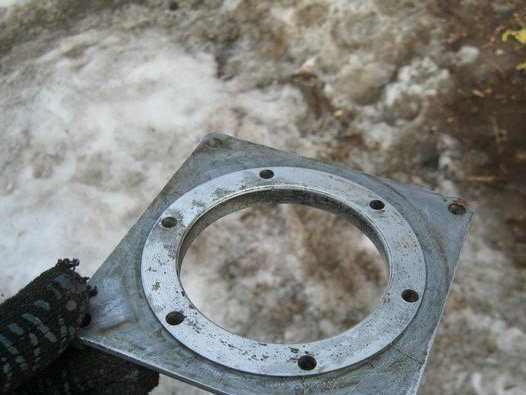
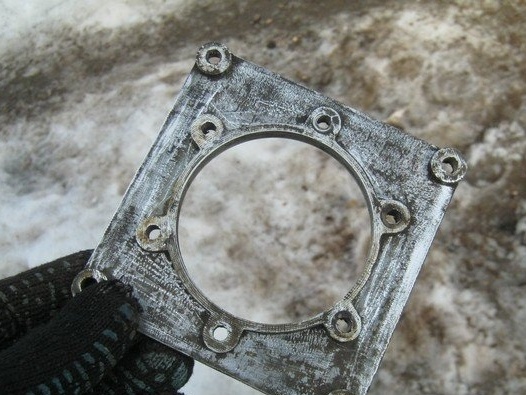
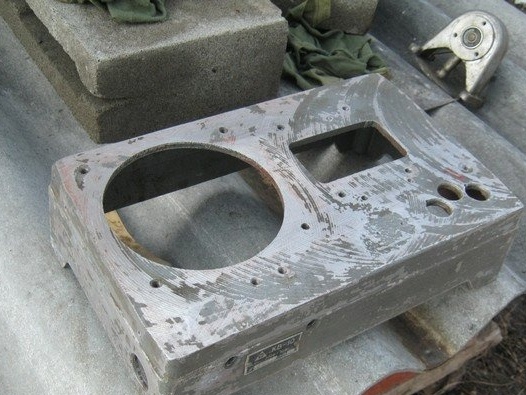
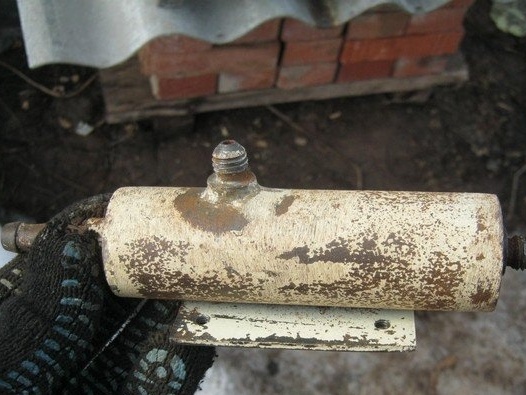
The steel manifold was thoroughly shaken from rust and blown, together with an aluminum base, degreased with gasoline and painted in two layers with gray enamel. The collector from external rust, the basis for beauty.

Pressure switch.
In general, it turned out to be in good condition. After disassembling, the insides and parts are cleaned with a medium-sized skin, purged and washed with gasoline. Instead of the hardened membrane, the corresponding part was cut out of the silicone mat, and the missing fasteners were added during assembly. Adjustable relay, designed for very low pressure.
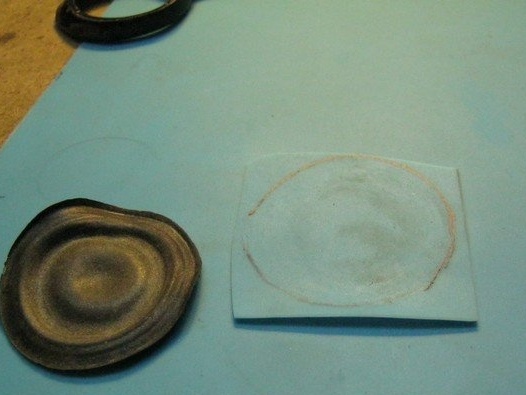
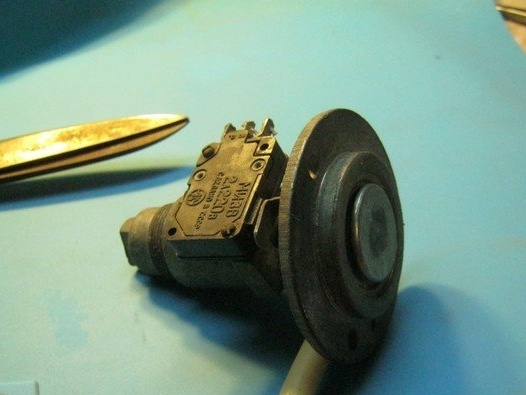
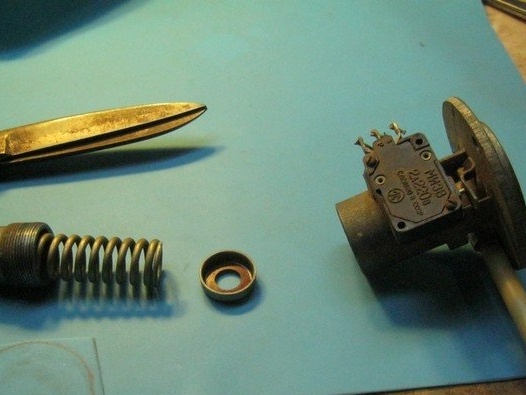
The main components and parts of the compressor are disassembled as far as possible, mechanically and solvents cleaned from coarse oil dirt. Fresh grease is filled in the crankshaft bearings, the missing fasteners are added to the assembly.The motor was in good condition, the condition of its bearings was found to be satisfactory. He underwent only external cleaning.
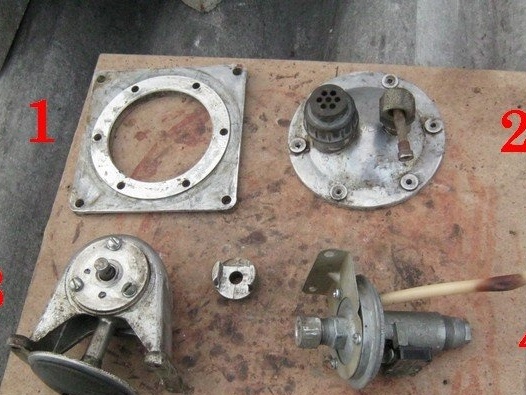
Broken diaphragm pump valve.
In the cover of the diaphragm pump 2 (see photo above), in addition to the failed rubber parts, one of the valves was broken. The textolite stop-limiter was thrown into the working volume and broke by a pusher 3 (see photo above). The belt restricting the freedom of this part is also somewhat crumpled.
A similar broken part was made of a piece of brass. The circle is marked out, holes are drilled, the part is cut out with a jewelry jigsaw.
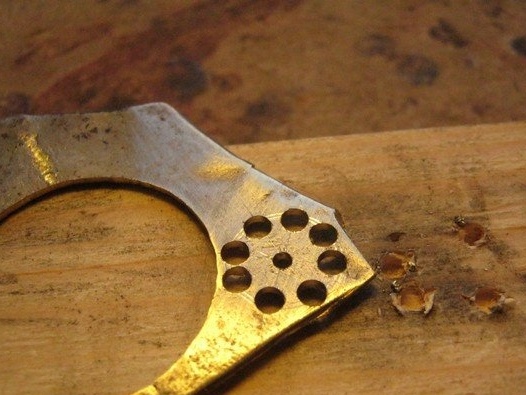
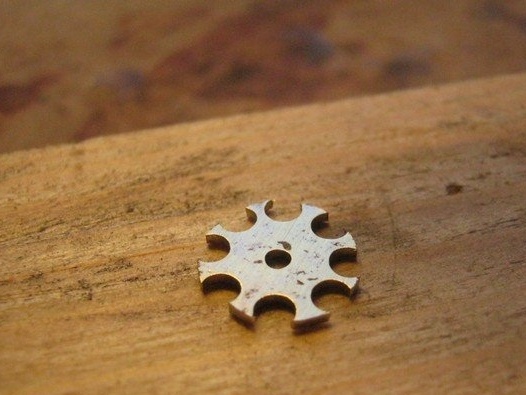
The diameter of the part is adjusted with some margin to the seat, the part is well sanded with a fine sandpaper (contact with an elastic band) and hammered into place. The rubber bands of the valves were replaced with parts cut from the same silicone mat, the hardened and cracked sealing rubber bands on the threaded parts of the valves were replaced with an FUM tape.
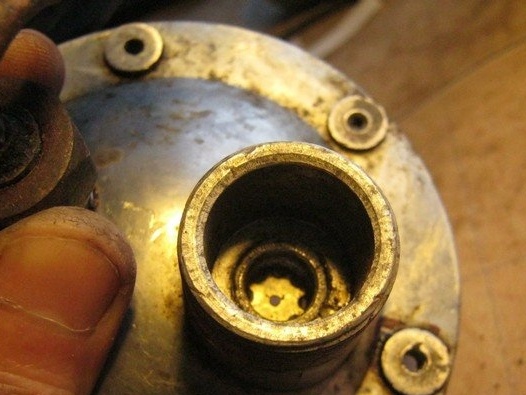
The pump diaphragm is cut out of a silicone mat. The pusher clamp was designed for a large thickness, in this place one more layer had to be laid.
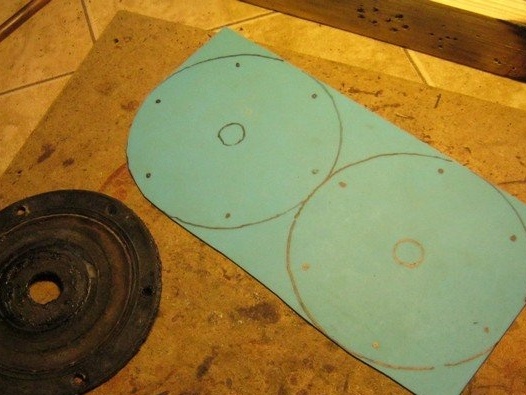
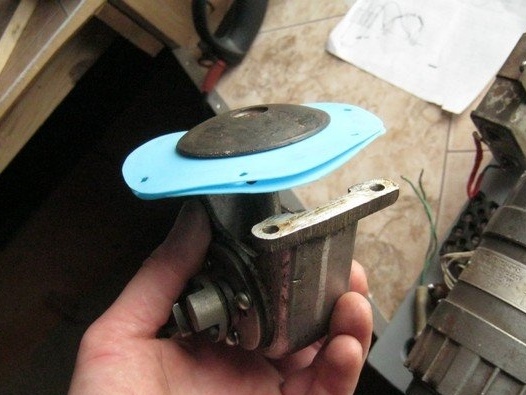
Initially, I tried to install two layers of the membrane, the final version with one. The second is cut to the diameter of the plastic holder (cap on the back), otherwise air passes in this place.
Compressor assembly
On a painted base, a motor is mounted on the racks, a flange-base of the diaphragm pump, a terminal block, a motor capacitor, a pressure switch and an air manifold (bottom).
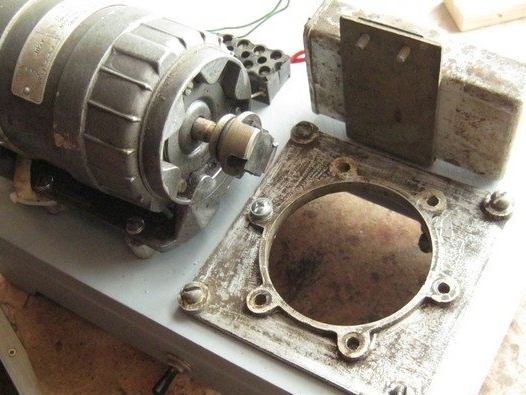
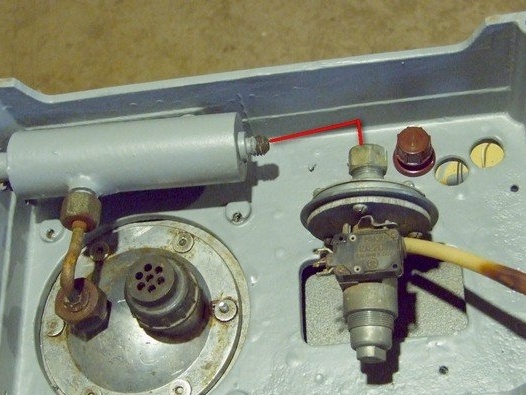
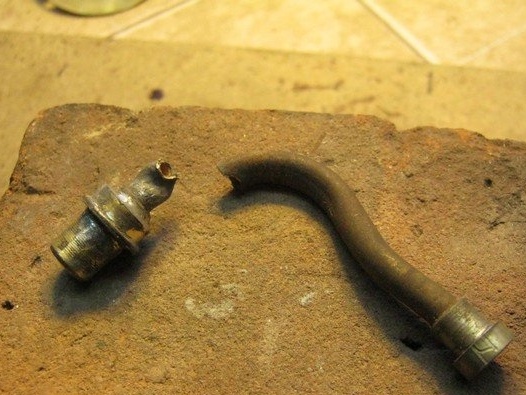
Broken brass tube pressure switch-manifold replaced. Rigid eyeliner disassembled, tips removed (one soldered) and cleaned. A copper tube close in diameter was selected, a suitable piece was cut off, its ends were fitted to the tips. He burned the tube with a gas torch, cleaned it and soldered one of the ends. He molded the tube and sealed the second end - fitted and flared in the second tip.
The diaphragm pump assembly (without a motor) had a small but noticeable resistance at the lower point of the pusher stroke. By adjusting the height of the pusher above the membrane (by laying gaskets under the base of the unit), it was possible to achieve a completely easy uniform stroke of the pump. I used wide –reinforced (body) washers as gaskets.
The coupling on the shafts of the pump and its motor was pretty broken - initially poor alignment and poor machining of the edges of the coupling ate gum and began to break metal parts. The coupling was completely removed, the motor shaft was carefully aligned with the load shaft using gaskets under the motor base, the shafts were connected by a piece of a rigid hose (gas, for “soft” wiring from household cylinders with propane) with a wire bandage.
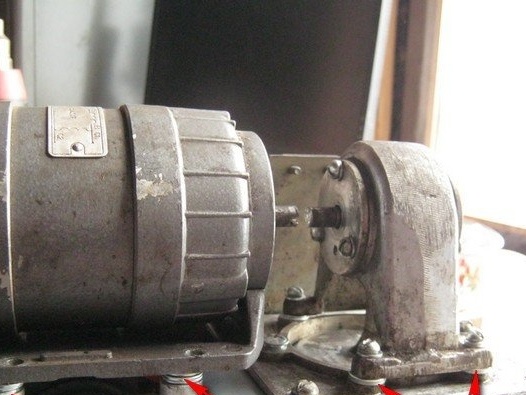
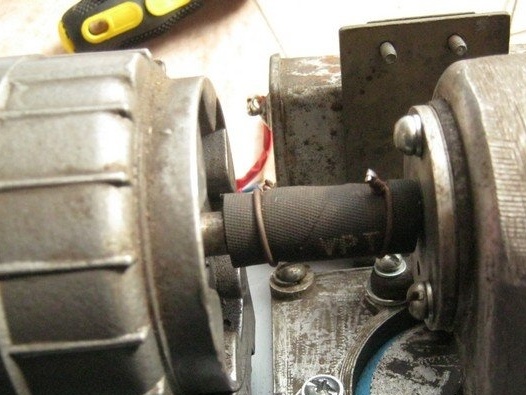
Tests have shown the full performance of the replacement - the transmitted force, thanks to the setting, is small, when the air line is blocked, the pressure switch trips, turning off the motor.

The electrical connections were restored, for convenience of operation, a toggle switch was installed in the compressor, which included power and a neon bulb with a current-limiting resistor. The second light to indicate the operation of the relay was redundant. The compressor does not work silently, it can be heard well - it is silent but the light is on - the pressure switch has tripped.
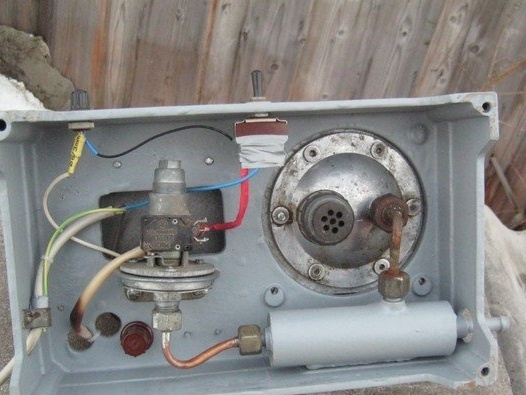
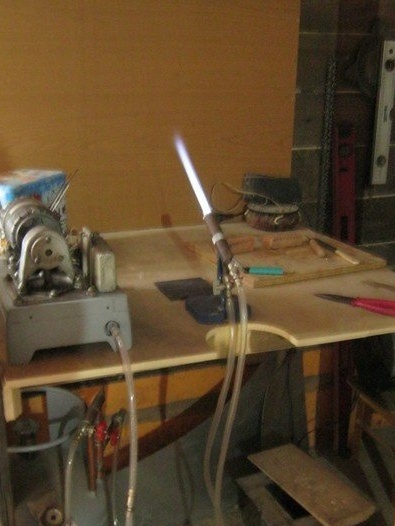
The compressor was tested on a small glass-blowing burner with gasoline vapor. Under the table you can see petrol carburetor.
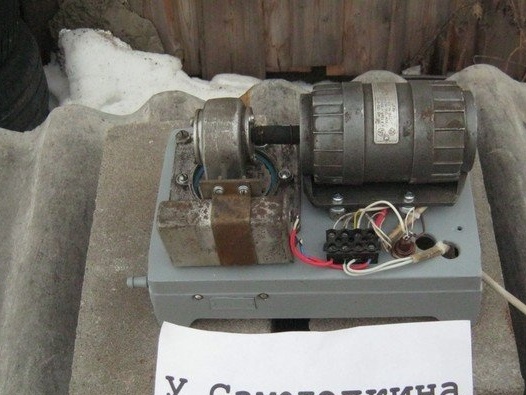
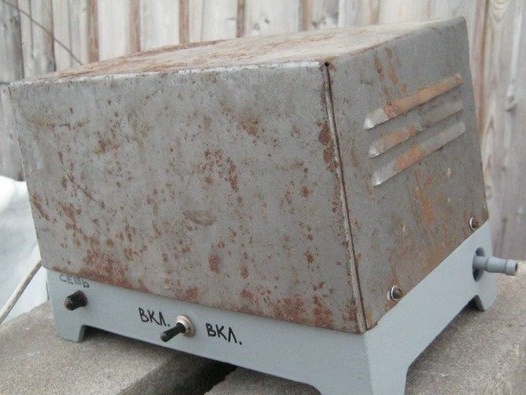
Conclusions, ways to improve.
All work on the restoration of the unit was aimed at replacing the noisy construction compressor for working with gasoline vapors. Restored, however, was not so quiet, especially considering its almost constant work. The noise casing of the device slightly reduces noise. In general, for long-term quiet operation (with glass on the burner), you can recognize the compressor as unsuitable, unless you take it out of the room. Such a device can be recommended for similar gasoline vapor burners - for brazing, brass. Here, the operation of the device will be short-term and its rumble will not become a special obstacle.
During the operation of the diaphragm pump, air enters the load in portions; when working with the burner, this manifests itself as a small pulsation of the torch.The disadvantage is eliminated by adding to the device a receiver with a capacity of at least a few liters. With such a low pressure, it can be a plastic bottle, a car camera or several balloons nested in each other for strength and placed in a cloth bag.
Babay Mazay, March 2019

